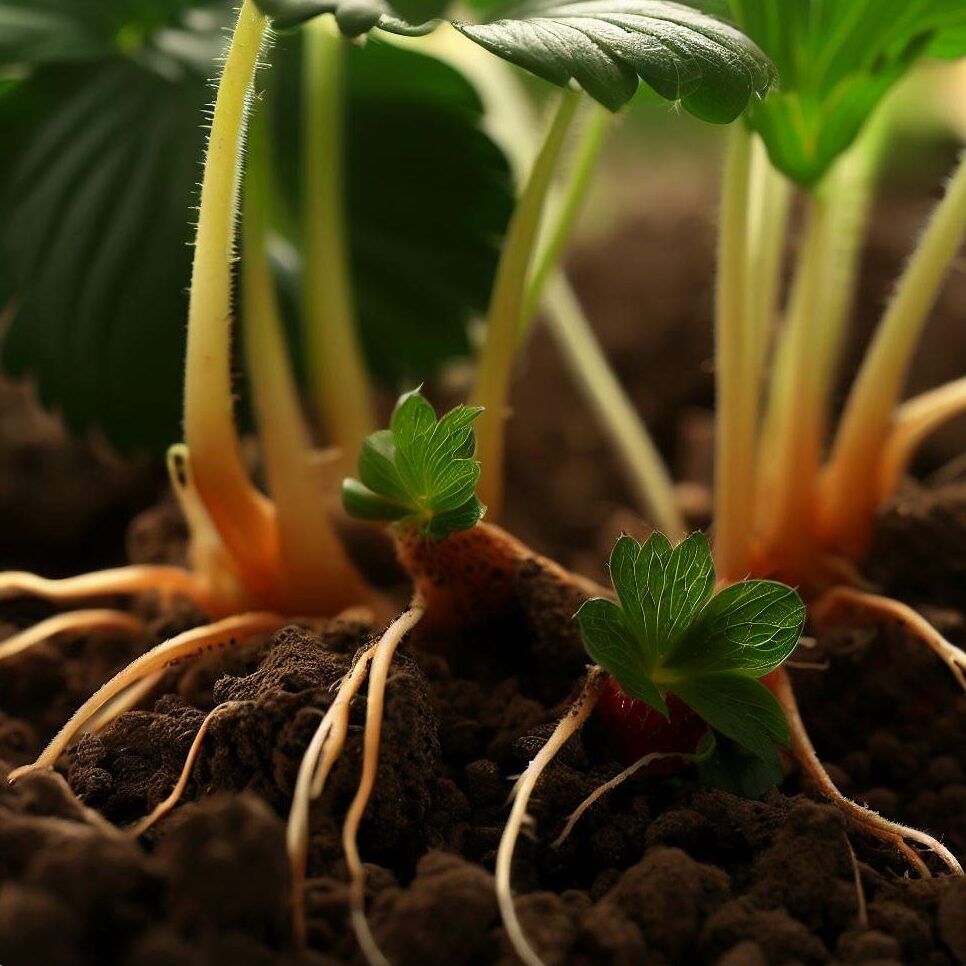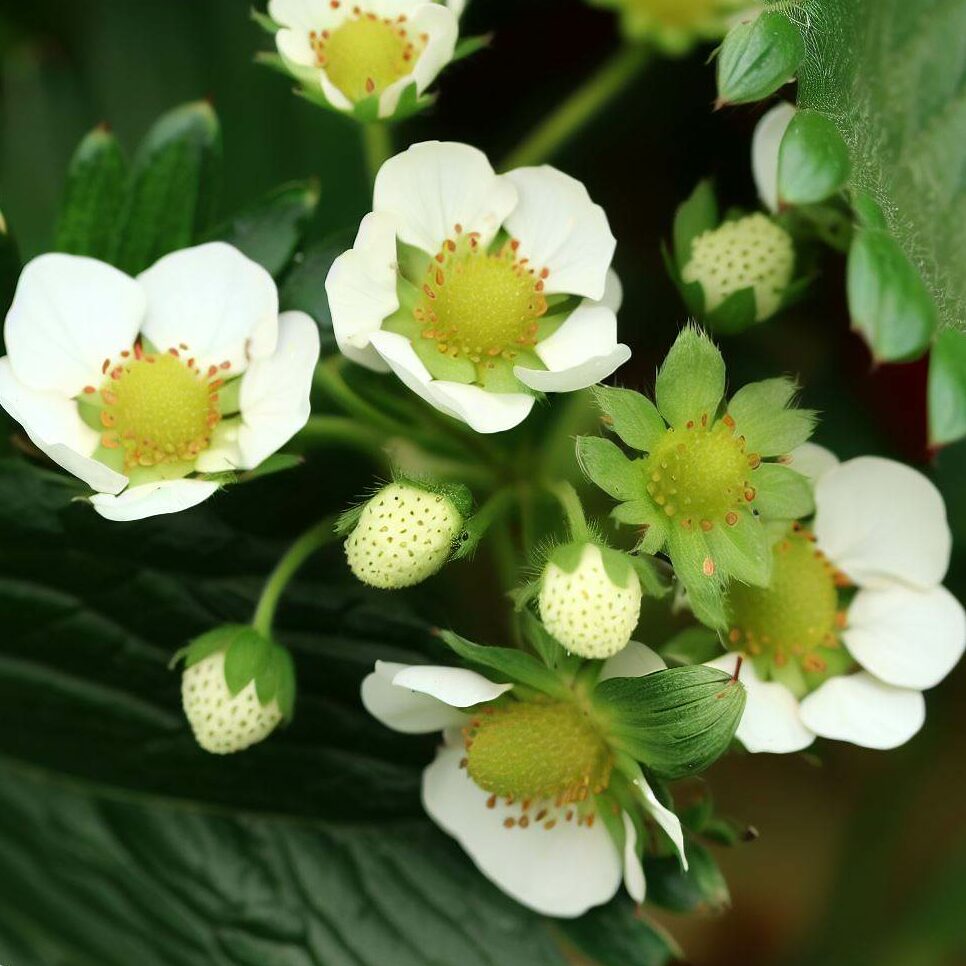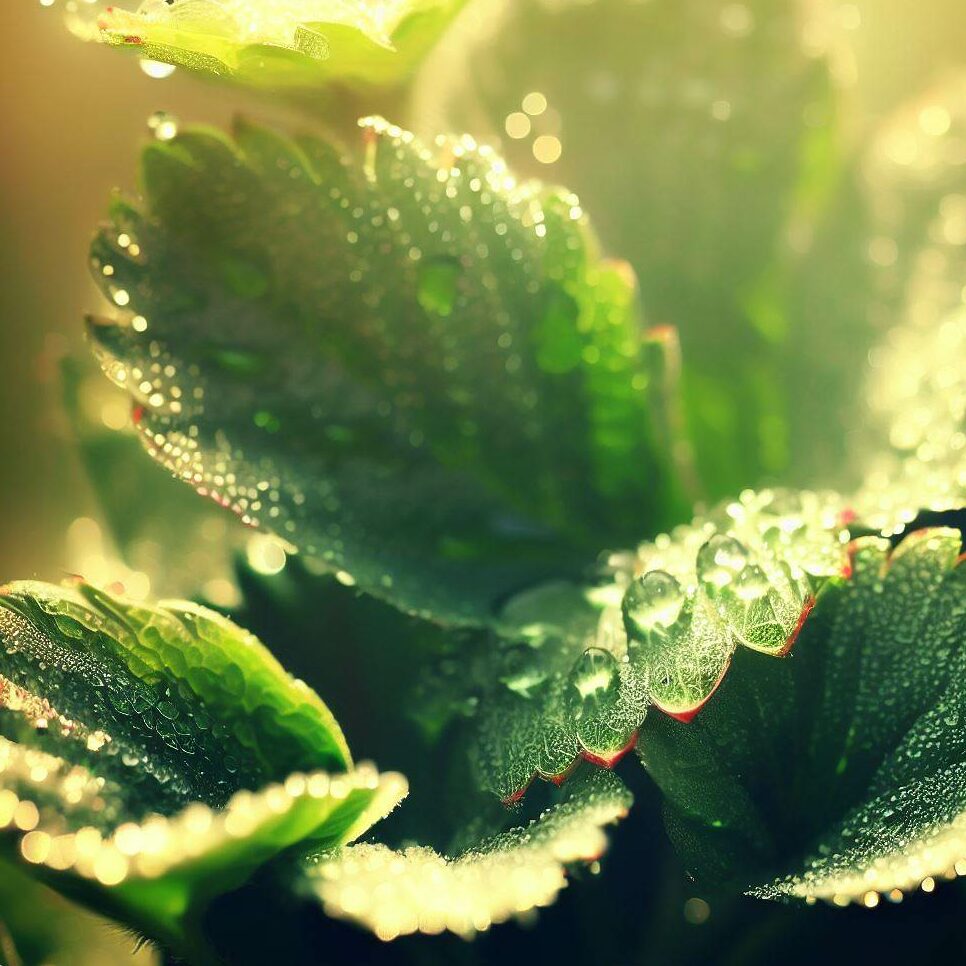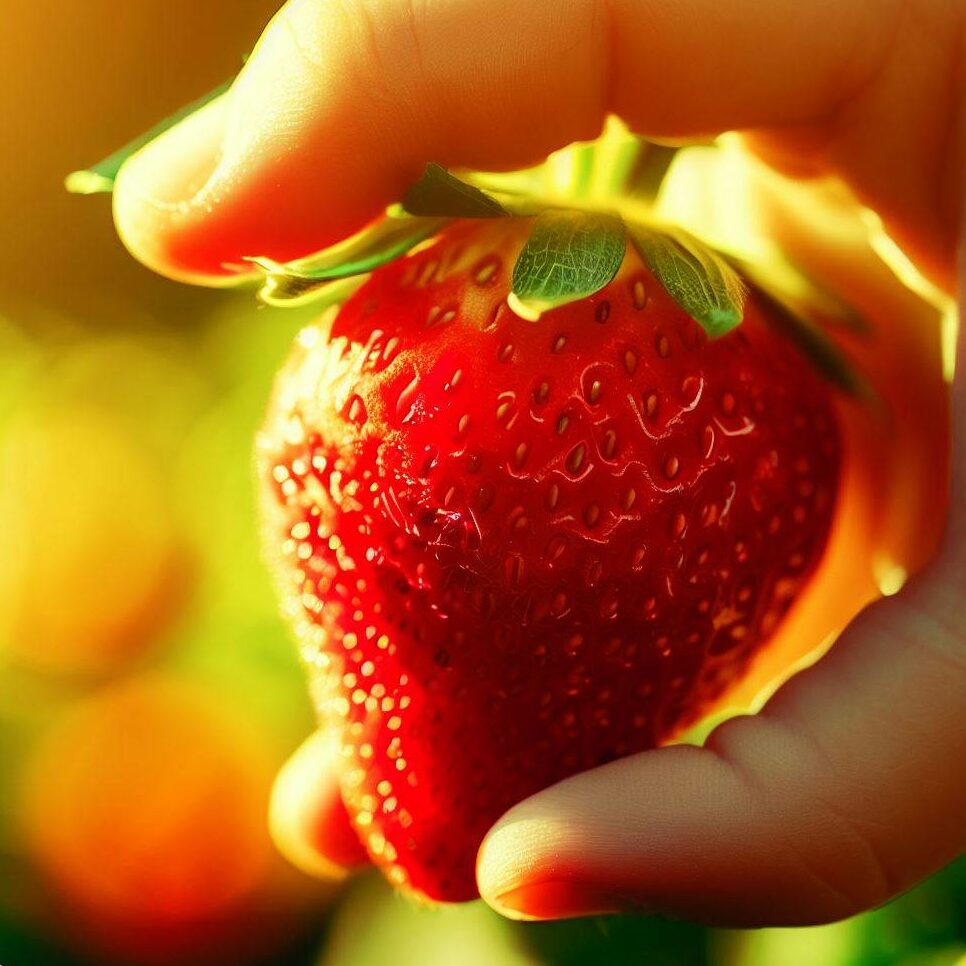Gardening, a timeless passion, offers not just a therapeutic escape but also presents its fair share of dilemmas. One such quandary that has gardeners scratching their heads is the question: “Should I cut off my strawberry runners?” Strawberries, with their sweet allure and vibrant red hue, are a favorite in many gardens. Yet, their runners, those long, creeping stems, can be a source of both wonder and confusion.
Whether or not to cut strawberry runners (also known as stolons), depends on your gardening goals. If you aim to maximize fruit production, it’s advisable to remove runners, especially in the plant’s early years, to direct energy towards fruiting. However, if propagation is your goal, allowing runners to root will help increase your plant count. It’s essential to strike a balance based on your objectives.

For the uninitiated, strawberry runners might seem like just another part of the plant. But for the seasoned gardener, they represent a choice. A choice that can influence the very yield and health of their beloved strawberry patch.
- Maximize Fruit Production: Cutting off runners can lead to a bountiful harvest.
- Propagation: Letting them root can increase the number of plants for the following season.
🍓 Berry Basics: : While it might be tempting to let nature take its course, understanding the role and impact of strawberry runners can make all the difference in your gardening journey. 🍓
So, whether you’re a novice gardener looking for guidance or a seasoned pro seeking a refresher, let’s delve deep into the world of strawberry runners and uncover the mystery.
Understanding Strawberry Runners
Strawberries, with their tantalizing sweetness, are a testament to nature’s intricacies, and one of their most fascinating features is the strawberry runner. But what exactly is a strawberry runner, and why does it matter? Let’s dive in.
What are Strawberry Runners?
To snip or not to snip, understanding runners is the first step in making that informed choice.
Often seen as long, creeping stems extending from the main strawberry plant, runners, scientifically known as stolons, are a natural part of the strawberry’s growth process. Their primary function?
- Propagation: Runners travel away from the parent plant, touch the ground, and develop roots, eventually forming a new strawberry plant.
- Resource Allocation: They channel nutrients and energy, playing a pivotal role in the plant’s reproduction strategy.
🍓 Berry Basics: If you’ve ever noticed a smaller strawberry plant emerging a little distance away from your main plant, you’ve witnessed the magic of runners in action! 🍓
Impact on Health and Productivity
Runners, while essential for propagation, come with their set of implications:
- Energy Distribution: Runners consume a significant amount of the plant’s energy. When left unchecked, they can divert resources away from fruit production.
- Plant Health: A strawberry plant with too many runners can become stressed, potentially reducing its lifespan and overall health.
- Garden Aesthetics: While some gardeners appreciate the natural look runners provide, others might find them a tad unruly, especially in structured garden setups.
🍓 Berry Basics: Regularly monitoring and managing runners can strike a balance, ensuring both a healthy strawberry plant and a garden that’s pleasing to the eye. 🍓
Maximizing Fruit Production
But to achieve that perfect juicy, home-grown strawberry, it;s important to understand the nuances of strawberry care. One of the most debated topics among gardeners is the role of runners and blossoms in fruit production. Let’s unravel this mystery.
Early Years: Blossoms and Runners
In the initial years of a strawberry plant’s life, patience is more than just a virtue—it’s a necessity. Here’s why:
- Blossom Removal: While it might seem counterintuitive, removing blossoms in the first year encourages the plant to divert its energy towards root development and overall growth.
- Runner Management: Similarly, cutting off runners ensures that the plant’s energy isn’t spread thin. Instead, it concentrates on strengthening the main plant, setting the stage for a bountiful harvest in subsequent years.
🍓 Berry Basics: Think of the early years as the foundation-building phase. Stronger roots and a robust plant in year one mean more strawberries in year two and beyond! 🍓

Fruit Development and Runners
Runners, while fantastic for propagation, can be a tad greedy when it comes to the plant’s resources. By cutting them off, you’re essentially ensuring that the nutrients and energy are channeled towards fruit development. The result? Bigger, juicier strawberries that are a treat for the taste buds.
From Roots to Fruits: A Timeline
One of the most frequently asked questions is, “how long does it take for strawberries to grow from roots?” On average, after planting a rooted runner, you can expect to see fruit in about 4-6 weeks, depending on the variety and growing conditions.
“Nature’s timeline is a marvel. With a little care and patience, roots transform into delightful berries, ready to be savored.”
In the world of strawberries, understanding the delicate balance between runners, blossoms, and fruit production can make all the difference. Here’s to many fruitful harvests ahead!
Propagating New Plants
For those with a green thumb, the allure of propagating new plants from existing ones is irresistible. Strawberries, with their runners, offer a delightful opportunity to do just that. Let’s embark on a journey to understand the art of strawberry propagation, from runners to robust new plants.
Runners: Nature’s Gift for Propagation
Strawberry runners, often seen as long, trailing stems, are nature’s ingenious way of ensuring the continuity of the species. These runners, when allowed to touch the soil, develop roots and eventually transform into independent plants.
- Spotting a Runner: It’s a stem-like extension shooting out from the main plant, with tiny plantlets at intervals.
- Letting it Root: Once you spot a runner, gently peg it down to the soil using a U-shaped wire or a small stone. This encourages the runner to establish roots.
🍓 Berry Basics: Ensure the soil where you peg the runner is fertile and well-draining. This boosts the chances of successful rooting. 🍓

Transplanting Strawberry Runners
Once the runner has rooted well, it’s time to give it a new home. Here’s how:
- Prepare the New Spot: Choose a location with good sunlight and well-draining soil. Dig a hole slightly larger than the rooted runner’s size.
- Separate the Runner: With a sharp pair of scissors, snip off the runner from the main plant and the new plantlet.
- Planting: Place the new plantlet in the hole, ensuring the roots are well-spread. Cover with soil and water gently.
🍓 Berry Basics: Transplanting is best done in the evening or on a cloudy day to prevent the young plant from experiencing shock. 🍓
Rooting Runners in Water
For those who love experimenting, rooting runners in water is a fascinating process. Simply snip off a runner, place it in a jar with water, ensuring the plantlet is above the water level. In a few weeks, you’ll notice roots developing. Once they’re substantial, transplant them to soil.
Indoor Strawberry Growth: A Timeline
Ever wondered, “how long does it take to grow strawberries indoors?” On average, strawberries grown indoors from rooted runners can take about 4-6 weeks to produce fruit, depending on the variety and care provided.
Propagation is one of gardening’s most rewarding experiences. With strawberries, it’s not just about the delicious fruit, but also the joy of watching a tiny runner transform into a fruit-bearing plant.
Maintaining Parent Plants
The allure of strawberries isn’t just in their sweet, juicy fruits, but also in the nurturing journey of the plants themselves. While runners play a pivotal role in propagation, they can also divert vital nutrients from the parent plant. Let’s delve into the art of maintaining the vitality of parent strawberry plants.
The Vitality of Parent Plants
Runners, while beneficial for creating new plants, can sap the energy of the parent plant. By regularly removing runners, you channel the plant’s energy into strengthening its roots and producing luscious fruits.
- Boosted Fruit Production: Fewer runners mean more energy for fruit production.
- Longer Plant Lifespan: A well-maintained parent plant can thrive for several years, offering bountiful harvests.
🍓 Berry Basics: Regularly inspect your strawberry plants and snip off any emerging runners to keep the parent plant robust. 🍓
Pruning Strawberry Plants in Pots
Container-grown strawberries need special care. Here’s a quick guide:
- Regular Inspection: Check for yellow or dead leaves and remove them.
- Snip Off Runners: Unless you’re propagating, keep the runners in check.
- Post-Harvest Care: After the fruiting season, trim the plants down, leaving about 3 inches of growth.
Planting Runners from Hanging Baskets
Got strawberry runners dangling from hanging baskets? Here’s how to plant them:
- Let Them Root: Allow the runners to develop roots while still attached to the parent plant.
- Prepare the Soil: Choose a well-draining spot with ample sunlight.
- Transplant: Once rooted, snip the runner and plant it in the prepared spot.
🍓 Berry Basics: Water the newly transplanted runner generously to help it establish in its new home. 🍓
By giving your parent strawberry plants the care they deserve, you ensure a legacy of delicious harvests for seasons to come. It’s a testament to the circle of life, right in your garden.

Addressing Common Questions
Strawberry runners, with their sprawling nature, often lead to a flurry of questions among budding gardeners. Let’s dive into some of the most frequently asked queries to shed light on these verdant tendrils.
Is it best to remove strawberry runners?
Generally, if the goal is to maximize fruit production, especially in the plant’s early years, it’s advisable to remove strawberry runners. This allows the plant to focus its energy on fruiting rather than spreading.
Do you keep strawberry runners?
If you’re looking to propagate and increase the number of your strawberry plants, then yes, you’d want to keep and root some of the runners. However, for optimal fruit yield, periodic runner removal is recommended.
How do you separate strawberry plant runners?
- Wait for Rooting: Allow the runner to develop small roots.
- Snip: Use a sharp pair of garden scissors to cut the runner from the parent plant.
- Transplant: Plant the separated runner in a new location or pot.
🍓 Berry Basics: Ensure the soil is well-draining and rich in organic matter when transplanting runners. 🍓
What are the advantages of strawberry runners?
Runners are nature’s way of helping strawberries propagate. They allow for the natural expansion of your strawberry patch and can be used to grow new plants without the need for growing strawberries from seed.
Can you save strawberry runners for next year?
Yes, runners can be potted and overwintered in a frost-free location. Come spring, they’ll be ready to be planted out in the garden.
Why are my strawberry runners dying?
Several factors can lead to dying runners, including excessive heat, inadequate watering, pests, or diseases. Regular inspection and proper care can prevent most of these issues.
Why do you have to chill strawberry runners?
Chilling, or stratification, helps break the dormancy of certain plants. For strawberries, it can enhance fruit production and ensure a more synchronized and prolific harvest.
What to do with hanging strawberry runners?
Runners from hanging baskets can be rooted in small pots placed beside the basket. Once established, they can be cut from the parent plant and grown independently.
When can strawberry runners be cut?
Runners can be cut once they’ve developed their own roots. This typically happens a few weeks after they first appear.
Can you root strawberry runners in water?
Yes, strawberry runners can be rooted in water. Place the runner in a container with water, ensuring the node is submerged. Once roots appear, they can be transplanted to soil.
Do strawberries fruit from runners?
Runners themselves don’t produce fruit. However, once they root and establish as independent plants, they will start fruiting in subsequent seasons.
With these insights, may your strawberry gardening journey be fruitful and filled with joy. Remember, every plant has its rhythm; understanding and respecting it is the key to a bountiful harvest.
Conclusion
As our journey through the world of strawberry runners comes to an end, it’s essential to reflect on the knowledge we’ve gathered. Strawberries, with their sweet allure, beckon gardeners of all levels, but understanding the intricacies of their growth can truly elevate your gardening experience.
- Runners’ Role: They can either be a boon for propagation or a drain on the plant’s energy, depending on your goals.
- Fruit Production: Maximizing fruit yield often means trimming those runners, especially in the early years.
- Propagation: Runners are nature’s way of multiplying, and with the right steps, you can harness this for a bountiful garden.
- Plant Care: Whether in pots or gardens, understanding how to manage runners can ensure the health and longevity of your strawberry plants.
🍓 Berry Basics: Every strawberry plant is unique. Observe, learn, and adapt to its needs for the best results. 🍓
In the end, the decision to trim or let those runners roam free lies in your hands. Equipped with the insights from this guide, you’re now empowered to make choices that align with your gardening aspirations. Here’s to bountiful harvests and the sweet taste of success!
